#resinicium bicolor
Explore tagged Tumblr posts
Photo
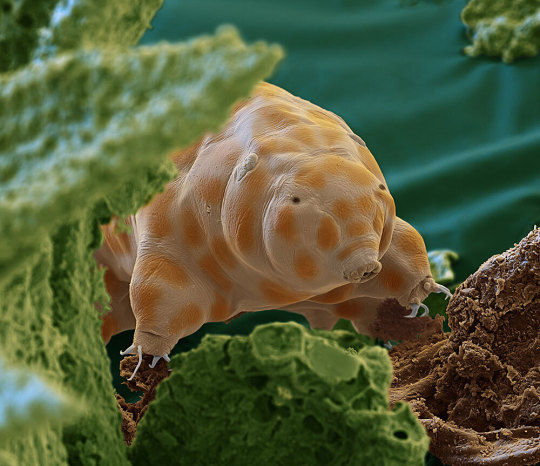
The newfound species seen here is one of about 1,300 known types of tardigrades. It was discovered in moss growing on dead tree trunks in Germany’s Black Forest. Far too small to see with the unaided eye, this creature is among billions of life-forms on the forest floor that are essential to the health of the planet. Magnified 2,400 times.
THESE TINY CREATURES ARE MARVELOUS
PHOTOGRAPH BY OLIVER MECKES AND NICOLE OTTOWA
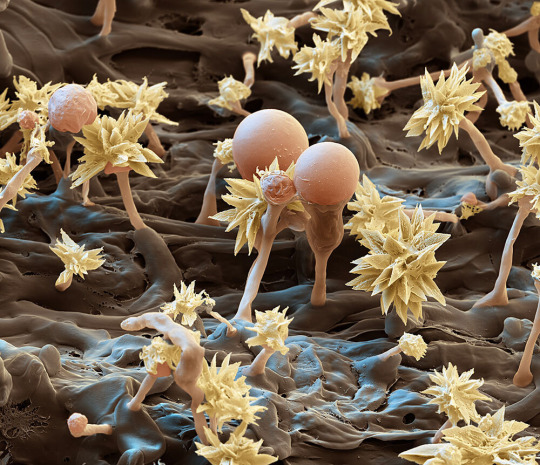
Fungi like this Resinicium bicolor—shown magnified 7,000 times—start breaking down dead trees by digesting lignin, the complex compound that helps form woody cell walls in plants.
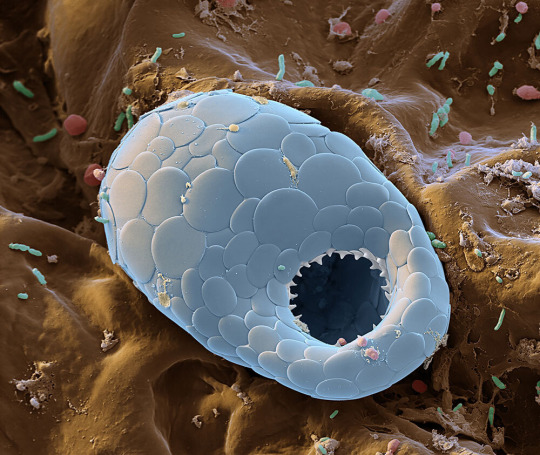
Scales of silica cover the single-celled body of a testate amoeba. These types of amoebas are named for the hard shells they create, possibly for protection against environmental changes within the forest litter.
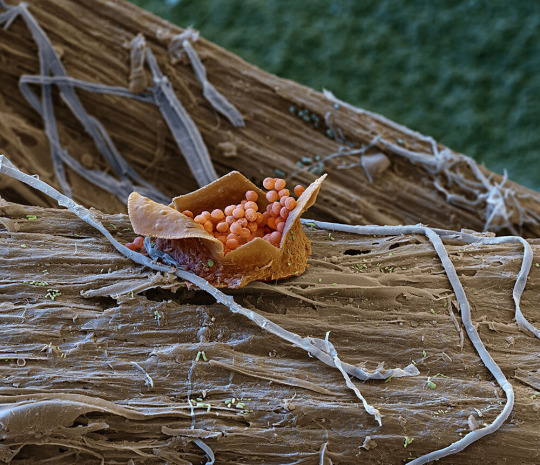
Resembling a fairy’s gift basket, the fruiting body of a slime mold, magnified 400 times, releases spores from its perch on woody debris draped in fungal filaments. Slime molds feast on other microbes found in decaying plant
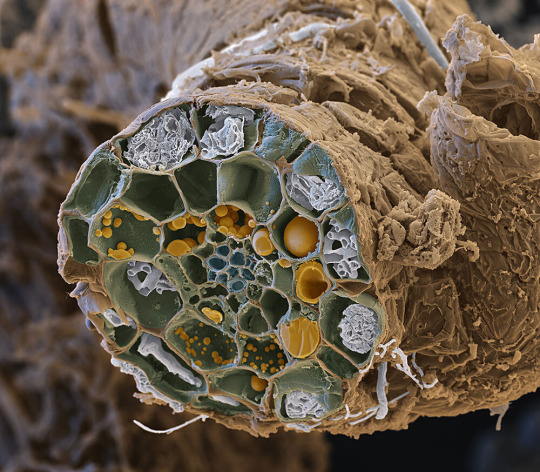
Some mycorrhizal fungi make their homes inside plant cells, as seen in this cross section of a European blueberry root. This allows soil residents of very different sizes to exchange nutrients—helping the forest
#oliver meckes#nicole ottowa#photographer#tardigrades#moss#germany#black forest#micro photography#nature#national geographic#fungi#resinicium bicolor#testate amoeba#slime mold#mycorrhizal fungi
640 notes
·
View notes
Photo

Fig. 13.1. Colony morphology and network architecture for different species of saprotrophic basidiomycetes. A–F Mycelial systems of Resinicium bicolor (A), Phanerochaete velutina (B), Hypholoma fasciculare (C), Coprinus picaceous (D) and Phallus impudicus(E, F) growing from wood blocks of 2 cm side in 24×24 cm trays of compressed non-sterile soil to illustrate the range of network architecture shown by different species. Photos courtesy of G. Tordoff
Network Organisation of Mycelial Fungi, M. Fricker, L. Boddy, D. Bebber, 2007
211 notes
·
View notes